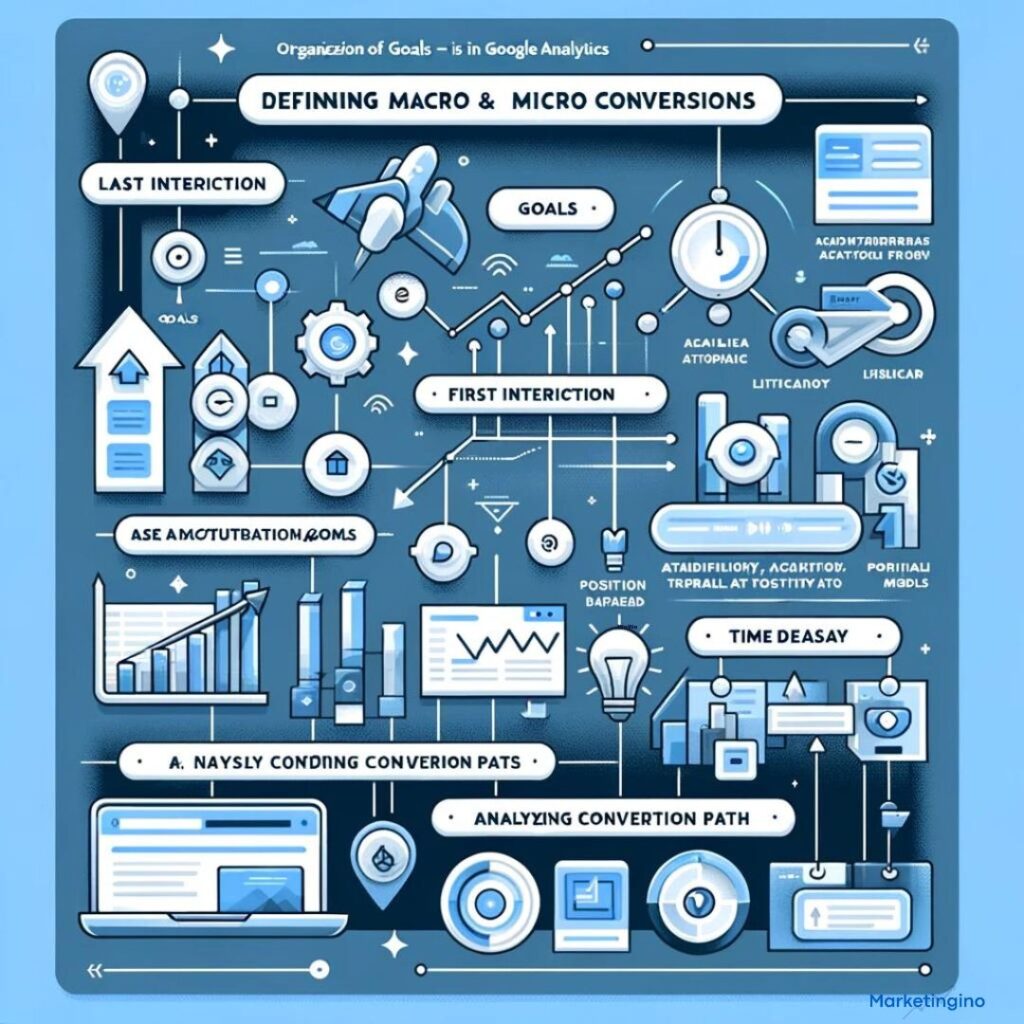In the complex world of digital marketing, understanding how different touchpoints contribute to conversions is crucial. Attribution helps marketers allocate credit to these touchpoints, providing insights into which strategies drive the most value. In Google Analytics, organizing macro and micro conversions allows businesses to gain a comprehensive understanding of their user journeys and optimize their marketing efforts accordingly.
What Are Macro and Micro Conversions?
Macro Conversions are the primary goals of a website or digital campaign. These are typically the end goals that directly impact the business’s bottom line, such as:
- Completing a purchase
- Submitting a lead form
- Signing up for a subscription
Micro Conversions, on the other hand, are smaller, intermediary actions that users take on their way to completing a macro conversion. These actions indicate user engagement and interest, such as:
- Viewing a product page
- Adding an item to the cart
- Signing up for a newsletter
While macro conversions are critical for measuring direct business impact, micro conversions provide valuable insights into user behavior and engagement.
Organizing Conversions in Google Analytics
Properly organizing macro and micro conversions in Google Analytics involves setting up goals and using attribution models to analyze user interactions. Here’s how to do it:
1. Setting Up Goals
First, define your macro and micro conversions as goals in Google Analytics. This process involves:
- Identifying Key Actions: Determine which actions on your site represent macro and micro conversions.
- Creating Goals: In the Admin section of Google Analytics, navigate to the View where you want to set up goals. Under the Goals section, click “New Goal” and select a template or create a custom goal.
For macro conversions, you might set up goals like “Completed Purchase” or “Form Submission.” For micro conversions, consider goals like “Newsletter Signup” or “Product Page View.”
2. Using Attribution Models
Google Analytics offers several attribution models to analyze how different touchpoints contribute to conversions:
- Last Interaction: Credits the final touchpoint before the conversion. Useful for understanding immediate conversion triggers.
- First Interaction: Credits the first touchpoint that initiated the user journey. Helps in identifying effective channels for driving awareness.
- Linear: Distributes credit equally across all touchpoints. Provides a balanced view of the user journey.
- Time Decay: Gives more credit to touchpoints closer to the conversion time. Useful for understanding recent influences on the conversion.
- Position-Based: Allocates 40% of the credit to the first and last interactions, with the remaining 20% distributed among middle interactions. Highlights the importance of initial and closing touchpoints.
- Data-Driven: Uses machine learning to assign credit based on the actual impact of each touchpoint. Offers the most accurate and tailored analysis.
3. Analyzing Conversion Paths
Google Analytics’ Multi-Channel Funnels (MCF) and Attribution reports provide insights into the conversion paths. These reports show how users interact with various channels before converting, allowing you to:
- Identify Key Touchpoints: Determine which channels and interactions are most influential in driving conversions.
- Optimize Marketing Efforts: Allocate budget and resources to the most effective channels and strategies.
- Refine User Journeys: Understand user behavior and make data-driven decisions to improve the customer experience.
The Benefits of Organized Attribution
Organizing macro and micro conversions and using attribution models in Google Analytics offer several benefits:
- Enhanced Decision-Making: Gain a clear understanding of which marketing efforts are driving results, enabling better decision-making.
- Improved ROI: Optimize spending by focusing on the most effective channels, improving the return on investment for marketing activities.
- Deeper Insights: Understand the full customer journey, from initial interest to final conversion, allowing for more effective engagement strategies.
Attribution in Google Analytics is a powerful tool for understanding and optimizing the customer journey. By organizing macro and micro conversions and leveraging various attribution models, businesses can gain valuable insights into their marketing efforts, improve decision-making, and drive better results. As digital marketing continues to evolve, mastering attribution will remain essential for achieving sustained success and growth.



